Last updated on October 28th, 2022 at 08:06 am
Do you love the look of impatiens flowers but don’t want to have to replant them every year? Well, then you’ll love perennials that look like impatiens! These plants are similar in appearance to impatiens flowers, but they come back year after year.
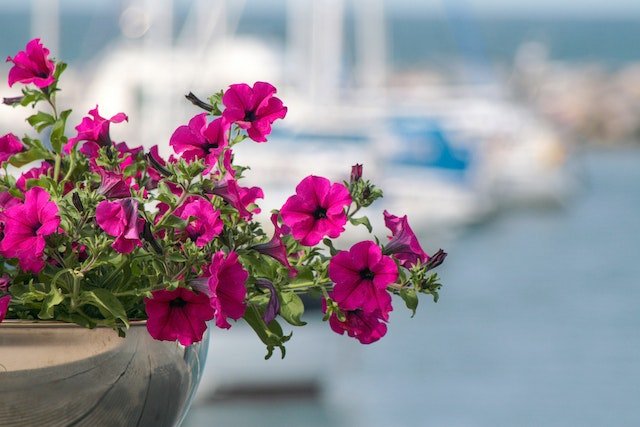
Table of Contents
What are impatiens like?
Impatiens are a popular annual flower that is known for its vibrant colors and pretty blooms. In some gardening zone and in tropical countries impatiens are actually perennials. But in general, impatiens are grown as annual flowers in most gardens.
The flowers of impatiens are relatively small, but they make up for it with their large quantity. Impatiens bloom from late spring to early fall and they come in a variety of colors including pink, red, purple, white, and orange.
One of the best things about impatiens is that they are relatively easy to care for and they don’t require a lot of suns. In fact, too much sun can actually cause impatiens flowers to fade.
If you’re looking for perennials that look like impatiens, then you’ll want to check out the following plants.
Perennials that look like Impatiens.
Vinca Vine

Many gardeners are familiar with impatiens, a popular annual flower that is easy to grow and comes in an array of colors. However, impatiens are not the only flowers that have this cheerful appearance.
There are actually several perennials that share a similar look, including the vinca vine. Hardy to zones 7-11, the vinca vine is a fast-growing plant that can reach up to 6 feet in length.
Like impatiens, it has glossy green leaves and borne clusters of flowers in shades of pink, purple, or white. However, one of the biggest differences between these two plants is their blooming period.
While impatiens typically bloom from late spring to early fall, vinca vines bloom from mid-spring to mid-summer. As a result, they are an excellent choice for adding color to your garden during the warmer months.
Garden Phlox

Garden phlox (Phlox paniculata) is a perennial that looks like impatiens. It is a member of the Phlox family, which includes about 60 species of perennials that look like impatiens. Garden phlox is native to the eastern United States and Canada. It is a popular plant for gardens and landscapes.
Garden phlox grows in upright clumps and produces clusters of white, pink, or purple flowers in summer. The flowers are fragrant and attract bees, butterflies, and moths.
Garden phlox is a long-lived plant and can live for decades with proper care. It prefers full sun but will tolerate partial shade. It is adaptable to different soil types but prefers well-drained soil. Garden phlox is susceptible to powdery mildew and root rot. It is deer resistant and attracts pollinators.
Daylily

Daylily (Hemerocallis) is a perennial plant that is often used as an ornamental plant in gardens. The flowers of daylily are typically orange, red, or yellow, and they have a trumpet-shaped structure. The plant grows to a height of about three feet and has long lance-shaped leaves.
Daylilies are drought-tolerant and can grow in a variety of soil types. They are also relatively maintenance-free, making them a popular choice for gardeners. While daylilies share some similarities with impatiens in terms of flower color and shape, the two plants are not related.
Impatiens (Impatiens walleriana) is a member of the Balsaminaceae family, while daylily belongs to the Asphodelaceae family. Despite their differences, daylilies are often used as substitutes for impatiens in gardens.
Blanket Flower
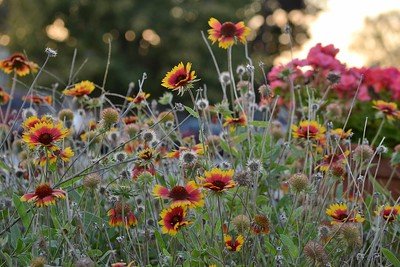
The Blanket Flower (Gaillardia pulchella) is a perennial that looks like impatiens but prefers full sun to thrive. In fact, they are often mistaken for impatiens. The plant is native to North America and is commonly found in the southwestern United States.
The blanket flower gets its name from the colorful blooms that resemble a blanket or tapestry. The flowers are typically red, orange, or yellow with a black center. The plant grows to be about 12-24 inches tall and has a mounded growth habit. It prefers full sun and well-drained soil.
The blanket flower is a low-maintenance plant that is relatively disease and pest-resistant. It is also tolerant of drought conditions. When given the proper care, this plant will bloom from early summer to fall. Gardeners can enjoy the colorful flowers of the blanket flower in their landscapes for many years to come.
Carpathian Harebell (Campanula carpatica)

Many perennials that look like impatiens are actually Carpathian Harebells, also known as Campanula carpatica. These plants have bell-shaped flowers that come in a variety of colors including pink, white, and blue. They are low-growing perennials that spread via rhizomes, making them ideal for ground cover.
Carpathian Harebells are native to the mountains of central and eastern Europe and prefer cooler climates. They will go dormant in hot weather and will not tolerate temperatures above 80 degrees Fahrenheit. When grown in the right conditions, Carpathian Harebells can bloom from early summer until fall.
Cranesbill, Hardy Geranium (Geranium sp.)
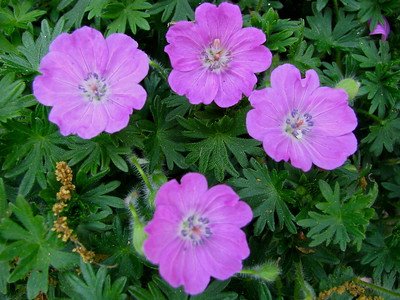
Many perennials come in a wide range of colors, and Hardy Geranium is no exception. This plant produces flowers in shades of pink, purple, lavender, white, and even bi-color blooms. The flower shape is also similar to impatiens, with five petals that are slightly ruffled at the edges.
In terms of growth habits, Hardy Geranium can reach up to two feet in height and spread up to three feet wide. It prefers full sun to partial shade and is drought-tolerant once established. With its long-lasting blooms and easy-care nature, Hardy Geranium makes an excellent addition to any garden.
Fernleaf Yarrow (Achillea filipendulina)
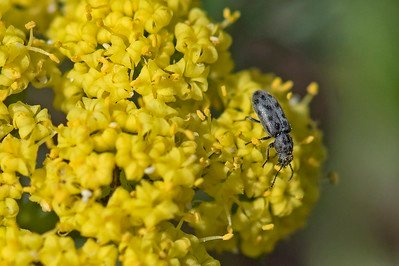
The Fernleaf Yarrow (Achillea filipendulina) is another perennial plant that prefers full-sun to grow. It is a herbaceous perennial that usually grows to about 2–3 feet (60–90 cm) tall and wide. The leaves are pinnately compound with 9-17 leaflets.
The flowers are borne in corymbs, each flower head having 10-20 ray florets and disk florets in the center. The flower heads are about 1 inch (2.5 cm) across and have the general appearance of impatiens flowers. The blooming period occurs from late spring to early summer and lasts about 1-2 months. There is no noticeable floral scent. Each flower head is replaced by an achene with a pappus that helps with wind dispersal.
This plant reproduces by reseeding itself. The Fernleaf Yarrow prefers full sun, mesic conditions, and loamy soil, but it will tolerate partial sun, dry conditions, and poor soils. It is commonly used as an ornamental plant in gardens or naturalized areas. This plant can be propagated by seed or division; divisions can be done in early spring or fall.
Lenten Rose (Helleborus orientalis)
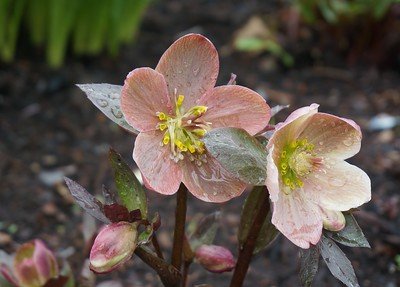
Many perennials have come and gone in popularity, but impatiens remain a staple in gardens across the country. Thanks to their wide range of colors and ability to thrive in shady areas, impatiens are easy to grow and make a great addition to any garden. However, they are not the only plant that can provide color and interest in shady areas.
Lenten rose (Helleborus orientalis) is a perennial that looks like impatiens in terms of flowers’ colors and shape as well growth habits. Like impatiens, Lenten roses are available in a wide range of colors, including white, pink, purple, and red. They also have a similar mounding growth habit, making them an ideal choice for filling in empty spaces in the garden.
In addition, Lenten roses are known for their long blooming season, which extends from early spring through late fall. Thanks to these similarities, Lenten roses are often used as a replacement for impatiens in gardens. However, they are considerably hardier than impatiens and can tolerate colder temperatures and extended periods of drought.
As a result, they are a good choice for gardeners who want the look of impatiens without the hassle of maintenance.
Peony (Paeonia x hybrida)

The peony (Paeonia x hybrida) is a perennial that looks like impatiens in terms of flowers’ colors and shape as well growth habits. The main difference between the two plants is that impatiens are annuals, meaning they only live for one growing season, while peonies can live for several years.
Peonies come in a variety of colors, including white, pink, red, and yellow, and their flowers typically have a diameter of 4-6 inches. Like impatiens, peonies prefer shady areas and moist soil, and they can reach a height of 2-3 feet.
Peonies are typically propagated by dividing the roots of an existing plant, which is a relatively easy process. However, because they take several years to reach full maturity, peonies are not often seen in gardens as annuals. For gardeners patient enough to wait, though, peonies provide years of beauty and enjoyment.
Rose Mallow (Hibiscus mosheutos)
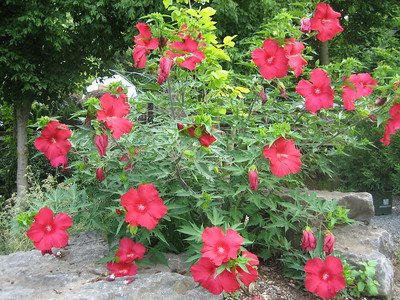
Perennials that look like impatiens come in a wide range of colors and shapes. Rose mallows (Hibiscus mosheutos) are one type of perennial that resemble impatiens in both flower color and shape. In terms of growth habits, rose mallows tend to be larger and more upright than impatiens.
New Guinea impatiens (Impatiens hawkeri)

Another type of plant that looks like an impatiens is the New Guinea impatiens (Impatiens hawkeri). These perennials are similar in flower color and shape to standard impatiens, but they have a more compact growth habit.
New Guinea impatiens are also available in a wide range of colors, including variegated varieties. Whether you’re looking for a plant with brightly-colored flowers or one that will add interest to your garden with its variegated leaves, there’s a perennial that looks like an impatiens to suit your needs.
Shasta Daisy (Leucanthemum x superbum)

Shasta daisies (Leucanthemum x superbum) are perennials that look like impatiens in terms of flowers’ colors and shape as well growth habits. They are native to Europe and Asia and were introduced to North America in the early 1900s. Shasta daisies grow best in full sun and well-drained soil.
They are tolerant of drought and heat but do not like wet, humid conditions. The plants can spread aggressively by seed or rhizomes, so they may need to be controlled in some areas. Shasta daisies typically bloom from June to September.
The flowers are 2-3 inches across and have white petals with yellow centers. Deadheading (removing spent flowers) will promote continued blooming. Shasta daisies make good-cut flowers and can be used in fresh or dried arrangements. They are also attractive to bees, butterflies, and other pollinators.
Stokes Aster (Stokesia laevis)

Stokes aster (Stokesia laevis) is a plant that perennials that look like impatiens in terms of flowers’ colors and shape as well growth habits. The plant is native to the southeastern United States but has been introduced elsewhere. It is named ford or pickleweed and American plant collector, Benjamin Stokes.
The plant grows up to 3 feet (91 cm) tall and has blue, lavender, or white flowers that bloom from June to September. The flowers are borne in clusters at the ends of the stems. The leaves are lance-shaped and have serrated margins. The plant prefers full sun but will tolerate partial shade.
It prefers moist, well-drained soils but is tolerant of drought conditions. Stokes aster is a good choice for gardeners looking for a colorful, low-maintenance perennial that will provide color all season long.
Tickseed (Coreopsis Grandiflora)

Tickseeds are perennials that look a lot like impatiens and tolerate constant heat from the sun. However, there are a few key differences between the two plants. For one, tickseeds generally have a more compact growth habit than impatiens, with shorter stems and smaller leaves.
In addition, tickseeds tend to produce fewer flowers than impatiens, but the individual flowers are usually larger. Finally, while both plants prefer humid conditions and partial shade, tickseeds are generally more tolerant of full sun than impatiens.
As a result, tickseeds make a great choice for gardeners looking to add a touch of color without all the hassle of growing impatiens.
Spiderwort
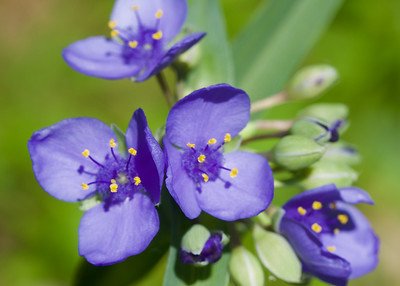
Spiderwort (Tradescantia x andersoniana) is a perennial plant that resembles impatiens. It is native to the southeastern United States and grows in full sun or partial shade.
Spiderwort typically reaches a height of 18-24 inches and is hardy in USDA zones 3-9. The foliage is green or yellow, and the blooms are blue, purple, or white. Bloom season is typically June-September. Spiderwort requires moist, well-drained soil and does not tolerate drought conditions.
These plants are relatively low maintenance and are deer resistant. They make excellent additions to borders, gardens, and containers.
So there you have it, a list of perennials that look like impatiens. These plants are a great option if you’re looking for flowers that look like impatiens but don’t mind a little sun. With their colorful blooms and easy-care nature, these plants will add beauty to your garden with minimal effort. So what are you waiting for? Give one of these perennials a try in your garden today!

Gardening is my passion and growing plants indoors has always been a stress relief for me. Grow a banana tree in my apartment once (although failed to produce bananas).






